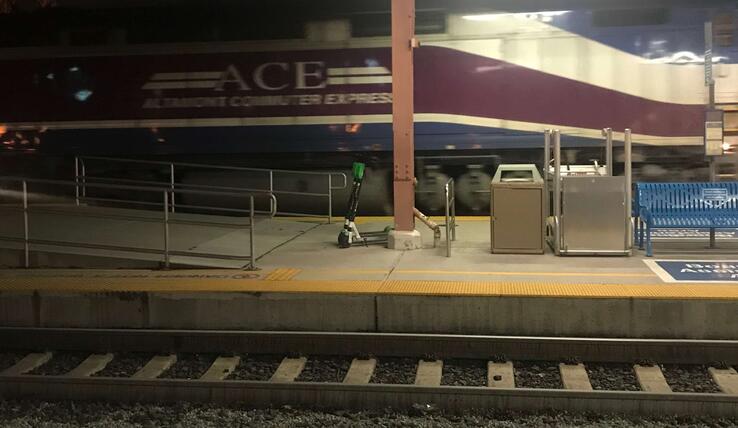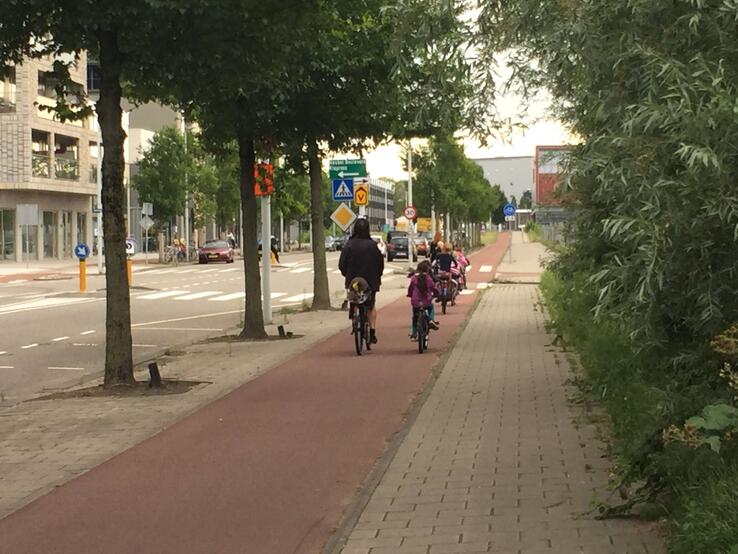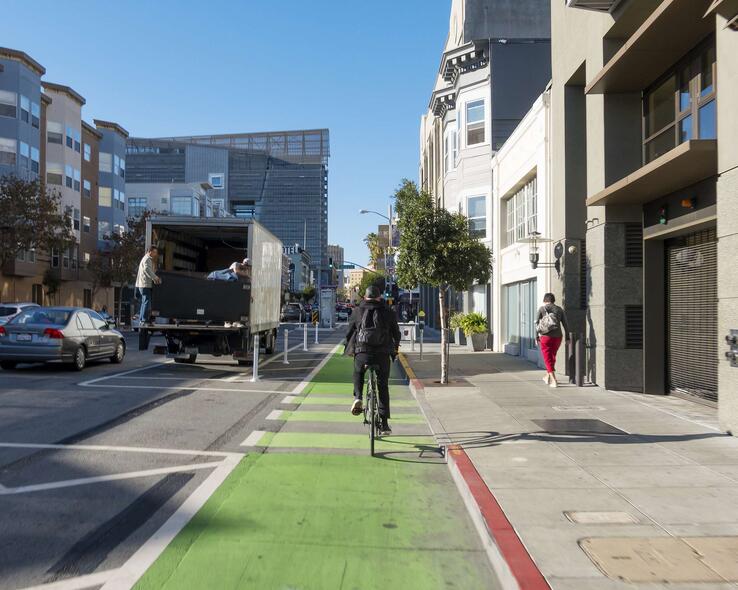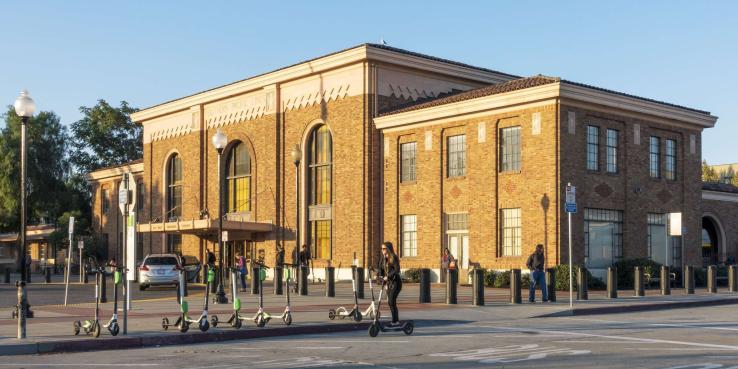Since their deployment in San Jose, e-scooters and other micro-mobility vehicles have been adopted at a rapid pace. Since February 2018, about 1.8 million trips were taken on shared e-scooters just in San Jose. In the same time period, bike-share services generated 130,000 trips.
Shared micro-mobility services provide people with a convenient, fast and flexible way to move around the city. They’re also affordable and easy to access. Currently, 81 percent of bike-share members in San Jose are enrolled in the Bike Share 4 All low-income discount program. Members of this program generate 56 percent of the total amount of trips taken throughout the city.
The success of micro-mobility caught many cities off guard. The surge in e-scooters and bikes has presented challenges over safety and allocation of street, sidewalk and curb space. In response, San Jose Mayor Sam Liccardo and Councilmembers Dev Davis and Raul Peralez directed city staff to look for ways to limit disruptions caused by e-scooter use, especially in areas with high pedestrian traffic. The resulting ordinance, adopted in late 2018, seeks to tackle some of these challenges by creating rules for parking, permitting and distribution — and by requiring operators to create technology that would block vehicles from operating on sidewalks.

SPUR believes micro-mobility vehicles, whether they are shared or private, can relieve congestion and help cities reduce carbon emissions: They can support the public transit network where connections are lacking and replace cars trips for short distances. As cities across the country look for ways to better balance the rise of micro-mobility vehicles, we believe new regulations and policies should focus their efforts on four main objectives:
1. Maximize the user experience.
When using a shared micro-mobility service, users may consider a lot of factors: How long will it take me to find a vehicle that’s charged and ready to use? Am I allowed to park at my destination? Will I be safe from traffic along my entire route? How much will it cost? Can I make a detour to be safer without increasing the cost of my trip? Are the rules different from those of other service operators?
The answers to these questions will influence whether people choose to use these services or not.
Since e-scooters first deployed, many operators have upgraded their once-clumsy vehicles with bigger wheels, better brakes and other features to improve rider safety. In the meantime, shared micro-mobility apps evolved to integrate additional features, such as user guides, instructions and geofencing systems that prevent parking the vehicles in certain neighborhoods. The City of San Jose is now requiring micro-mobility operators to take geofencing technology to the next level by preventing vehicles from operating on sidewalks. While some of these changes increased awareness and safety, the latter could reduce convenience and flexibility.
There is great benefit in regulating and monitoring the safety and use of these vehicles. But it is imperative that cities develop solutions hand-in-hand with micro-mobility operators to offer people convenient and reliable options for getting around without a car.
2. Provide a service that is equitable and accessible to all.
Like private bikes, skateboards and scooters, shared micro-mobility services allow people to move around the urban core much faster than other transportation modes. And because most of the shared vehicles are electric, they allow people with reduced physical ability to benefit from a fast and convenient way to make short trips. They can also spare people from the cost of investing in a personal vehicle.
In order to serve its communities equitably, the City of San Jose requires operators to make 20 percent of their services available in Communities of Concerns, census tracts with a concentration of both minority and low-income households.With the kick-off in January of its Access and Mobility Plan — a draft framework of transportation directives for the next three decades — the city has the opportunity to rethink the modes it wants to incentivize for all users and the strategies for doing so.
Micro-mobility could play an important role in the places where transit service will be cut as part of the Santa Clara Valley Transportation Authority’s New Transit Service Plan. We see an opportunity for the city and VTA to partner to better serve communities whose transit service will be impacted by the plan.
3. Prioritize public and private investments that will benefit multiple environmentally friendly transportation modes.
To combat climate change, it is critical that cities reduce their carbon emissions during the next three decades. As SPUR’s Agenda for Change explains, this is a matter of concentrating growth within existing city boundaries, creating great neighborhoods where people can fulfill most of their needs and connecting these places with an effective public transportation network.
Helping people make short trips within their neighborhoods and access public transit for longer trips is key to this vision, and micro-mobility vehicles can play a role. But to incentivize their use, cities will need to rethink the infrastructure and design of the public realm. Luckily, they can count on the willingness of operators to help — at least for now. Private funds for improving services may come to an end when early investors start requiring the operators to generate profits.
This means cities should choose the projects and policies they want to move forward with carefully. Most importantly, cities should capitalize on operators’ resources to invest in redesigning streets and policies so that all people who are not driving feel safe. We recognize that people should not be allowed to ride e-scooters on particularly narrow and highly used sidewalks. However, collisions involving cars and slower transportation modes are still a reality. Therefore, cities should not require operators to spend their funds on software that would only mitigate the challenges their own service faces (sidewalks riders, for example).
Where neighborhoods and streets were once designed to prioritize the car, it’s now time to think creatively about how to best accommodate the many new modes of transportation. This is not any easy feat, especially given the rapid nature of technological advances. Cities must properly assess how new regulations, rules and infrastructure impact the user experience. Do these interventions encourage people to continue to use micro-mobility options? Or do they cause additional barriers and reduce convenience? Do they help these modes co-exist harmoniously in public space with people walking and biking?


4. Include an outreach process in the implementation strategy.
We believe that cities need to encourage individuals to shift to new forms of transportation and that requires putting the user first. In early 2019, the City of San Jose launched an education campaign to encourage e-scooter users to adopt better practices on the streets. Such initiatives are critical to creating an urban environment that feels safe to all and meanwhile does not demonize micro-mobility users.
Conclusion
Regulations, permitting and new technology are all great ways to help mitigate the adverse effects of micro-mobility vehicles on city streets. But software alone will not successfully integrate e-scooters and other new vehicles into busy city streets. To create a safe and welcoming environment for all types of travelers, cities will need to take a holistic approach to adapting their streets. People are choosing new ways to move around a city, neighborhood or block, and the public realm needs to change to accommodate these shifts in behavior. Working with communities to inform, educate and design new standards will be critical to creating communities that safe, welcoming and sustainable.
